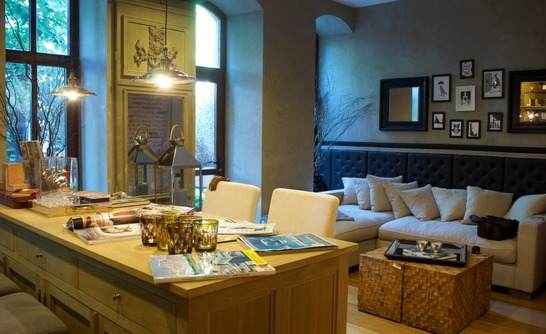
Picture standing in front of a building. Its form stands assertively against the horizon, its lines strong and deliberate. Now go inside. The light is warm, the colours calming, and all the furniture appears to encourage you to unwind. These two moments—outside and in—are influenced by two closely related yet distinct disciplines: architecture and interior design.
Since we are students entering the world of built environments, we should know how these disciplines collaborate and diverge from each other. Both fields have in common creativity, problem-solving, and an intimate understanding of space but emphasize different elements of how we live and engage with our environment.
Architecture: Constructing the Shell and Structure
Architecture is akin to designing a building’s bones and skin. It entails thinking through how a building stands, how it relates to the environment, and how it serves its purpose. Architects consider where the walls should be, how the building will endure the weather, what materials will protect it, and how the overall shape enhances its function.
For instance, when building a school, the architect determines how many classrooms the building will require, how the students will travel around the building, where the playground or other open area will be located, and how to design the building to be energy efficient. Architecture is solving intricate problems on a grand scale while considering safety, comfort, and usability.
Interior Design: Bringing Life to the Space
Where architecture provides the form, interior design adds soul. Interior designers design with the space once it is constructed, or occasionally while still in the design stages, to make it comfortable and functional. They think about how light pours into a space, where individuals will place themselves, what textures provide coziness, and how colour affects emotions.
Take the same school. The interior designer selects student-friendly desks, places lighting to diminish glare, picks wall colours that encourage concentration, and designs storage that maintains order. Interior design is enhancing experience, making space enjoyable and effective.
Working Together, Thinking Apart
While interior design and architecture share some overlap, they attack problems differently. Architects are usually engaged from the start, planning everything from the footprint of the building to its sustainability. Interior designers are brought in after walls are erected or work with the architect early on so that the inside space satisfies the building’s intended purpose.
An effectively designed space needs both to collaborate. Without a stable architectural design, an interior design won’t be able to thrive. Without interior design that is well considered, an architectural building can be austere or incomplete.
Skills and Training
Both professions demand technical expertise and creativity but differently. Architecture students are taught structural engineering, environmental systems, and drawing large scale plans. They study how buildings are connected to land, climate, and society.
Interior design students learn about space planning, colour, furniture design, and human behaviour. They learn how materials influence emotions and how to design layouts to make people work more or relax more.
In schools such as Thakur School of Architecture and Planning, students are taught to learn about both disciplines so they can work together and adjust to different types of projects.
Where Can You Go from Here?
For those who love designing buildings, architecture has options in urban development, green building, restoration, and more. For those who are interested in designing day-to-day life, interior design creates avenues in living, working, hospitality, and healthcare settings.
Some integrate both functions, crafting not just the appearance of buildings but the very way people live inside them. Others opt for specialization, mastering structural soundness or aesthetic balance.
Why Understanding the Difference Matters
Knowing the distinction helps you decide which path aligns with your passion and skills. It also helps you communicate better with clients, collaborate with other professionals, and approach projects with a clearer vision.
Beyond that, architecture and interior design collectively determine how we live. From schools where children grow up learning, to homes where families grow close together, to offices where innovation takes hold, the buildings and spaces we create affect health, comfort, productivity, and happiness.
Conclusion:
Architecture and interior design are two sides of the same coin—both having an impact on how spaces are visible, felt, and functional. Architecture constructs the setting, but interior design brings it to life and gives it meaning. As students training to enter these professions, embracing both points of view will enable you to create spaces that are not just stunning but also considerate and human-focused.
Ultimately, it is not a matter of either/or. It is about understanding how each field enhances the other and how, in combination, they design spaces that enhance the manner in which we live, work, and interact.
The world you create will tell stories, solve problems, and form experiences. If you are designing architecture, interior design, or both, the path is yours to forge with imagination, accountability, and heart.
